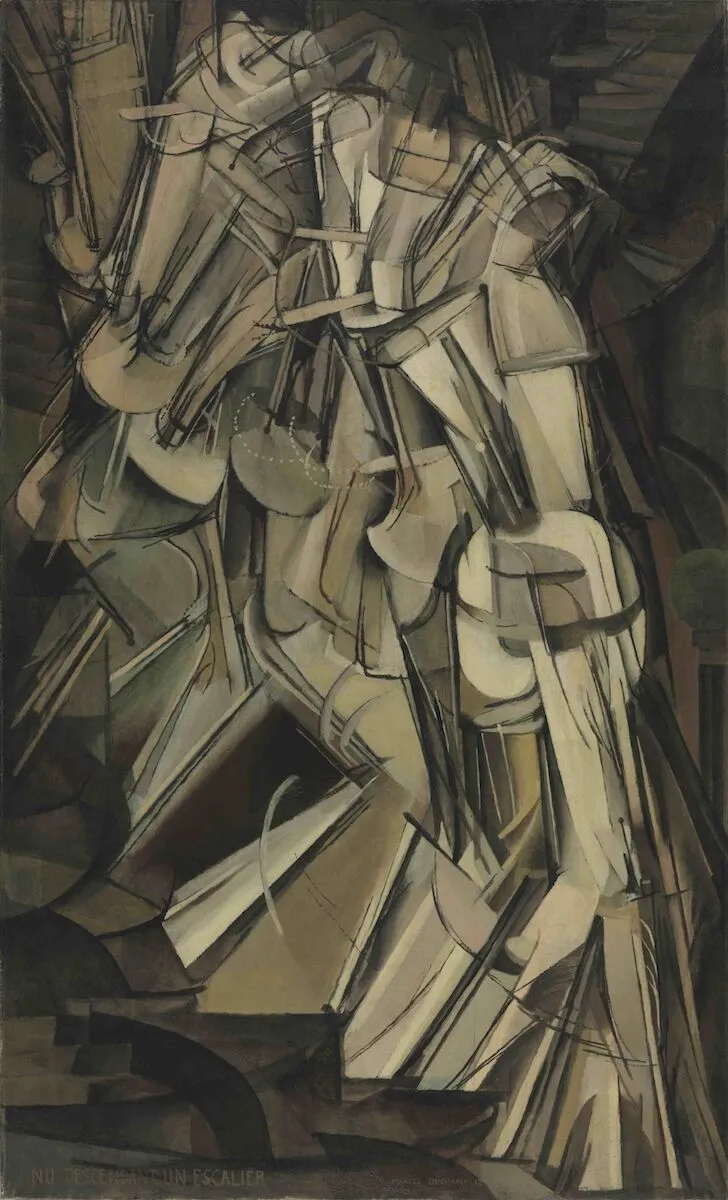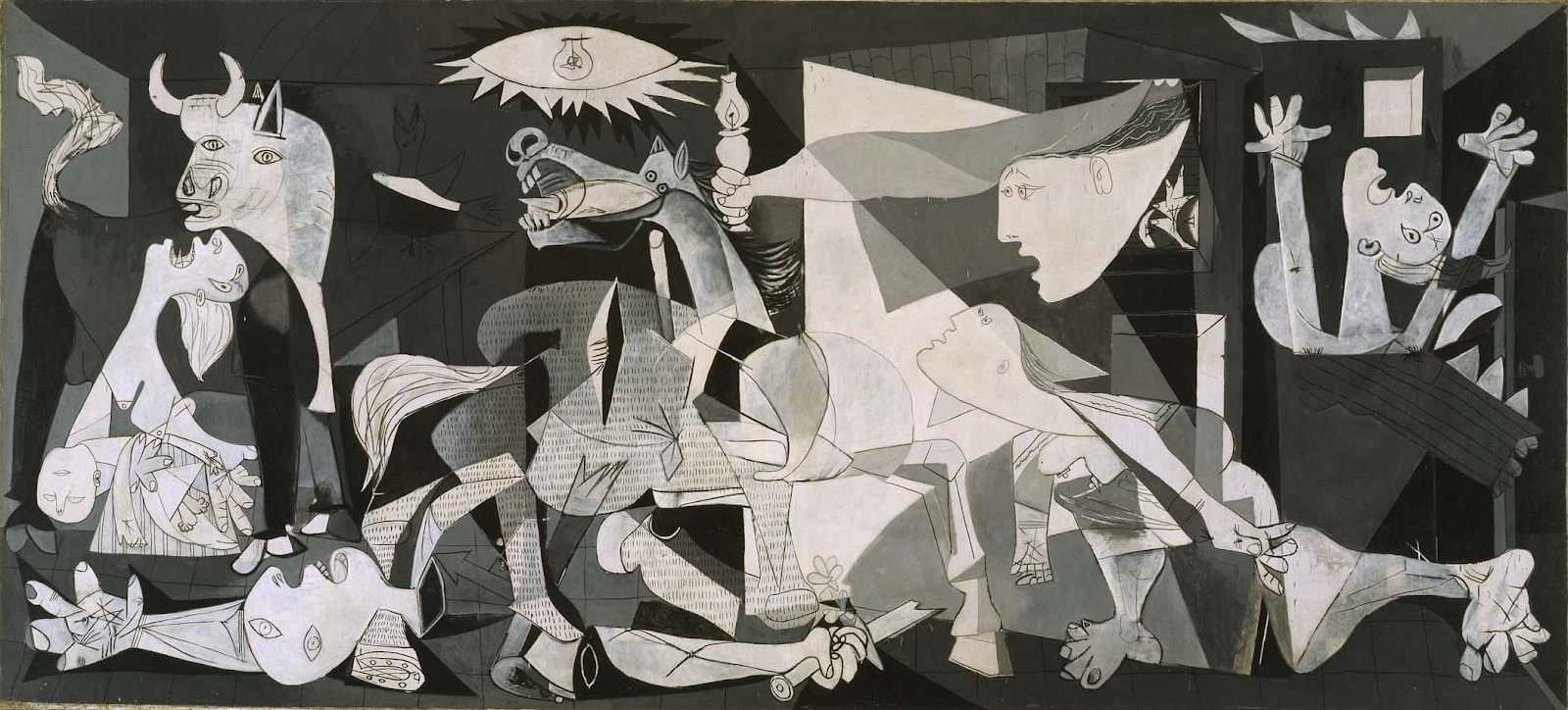Early Modern Innovations in Science and Technology
Early Modern - Innovations in Science and Technology
Introduction:
The Early Modern era was a period marked by rapid advancements in science and technology. In this week's blog post, I will explore three significant works of art from this era that embody these innovations and how it affected people during this time. The selected works are Marcel Duchamp's Nude Descending a Staircase, No. 2, Pablo Picasso's Guernica, and Umberto Boccioni's Unique Forms of Continuity in Space. Each of these works demonstrates the intersection of art, science, and technology, reflecting the changes of their time.
Marcel Duchamp, Nude Descending a Staircase, No. 2
Discussion: Duchamp's Nude Descending a Staircase, No. 2 is a great example of how technological advancements influenced art. The painting depicts a human-like figure in motion, enveloped in a series of overlapping sheets that create a sense of movement. This technique mirrors the era's fascination with machinery and the mechanization of movement, drawing inspiration from photographic studies of motion by Eadweard Muybridge and Étienne-Jules Marey (Folland).
Aesthetic Reaction: The fragmented depiction of the figure creates a sense of mechanism, reflecting the era's technological advancements. The usage of muted, gray colors and geometric shapes creates a sense of industrialization, and the composition suggests a blend of human form and machine-like movement, perhaps as commentary as to how technological advancements are integrating into human society. I get a feeling of curiosity and wonder, engaging me to consider the boundaries between art and technology.
Pablo Picasso, Guernica
Date: 1937
Place Created: Paris, France
Discussion: Picasso's Guernica is a powerful statement on the horrors of war, particularly focusing on the bombing of the Basque town of Guernica during the Spanish Civil War (Robinson). This oil painting depicts the devastating impact of modern technology used in warfare, reflecting on the destructive potential of scientific advancements when used in conflict (Robinson).
Aesthetic Reaction: The monochromatic use of colors and the abstract composition of Guernica evoke a sense of anguish and destruction. The distorted figures and the overall sense of chaos create a visceral emotional response, emphasizing the brutality of technology involved in warfare. The painting's dramatic intensity and its anti-war message help illustrate to me, the viewer, the darker side of technological progress (Robinson).
Umberto Boccioni, Unique Forms of Continuity in Space
Artist: Umberto Boccioni
Date: 1913
Place Created: Milan, Italy
Discussion: Boccioni's Unique Forms of Continuity in Space epitomizes the celebration of technology and progress (McKever). The sculpture represents a human figure in motion, its form distorted to convey speed and fluidity. This work captures the essence of the modern era's fascination with the potential of human and machine integration.
Aesthetic Reaction: The bronze sculpture's flowing, aerodynamic lines and dynamic posture creates a sense of motion. The figure's distorted form suggests a blend of human and machine, embodying the Futurist ideal of technological advancement (McKever). To my eyes, this piece evokes feelings of forward-thinking, showing the optimism of the Early Modern era towards technological progress.
Conclusion:
These selected works by Duchamp, Picasso, and Boccioni each reflect the impact of scientific and technological innovations on the arts during the Early Modern era. Through their unique styles and themes, these artists illustrate the intersection between art, science, and technology, offering a look into the transformative movements of their time.
References:
Folland, Thomas. “Marcel Duchamp, Nude Descending a Staircase, No 2.” Smarthistory, smarthistory.org/duchamp-descending/. Accessed 22 July 2024.
Robinson, Lynn. “Pablo Picasso, Guernica.” Smarthistory Pablo Picasso Guernica Comments, smarthistory.org/picasso-guernica/. Accessed 22 July 2024.
McKever, Rosalind. “Umberto Boccioni, Unique Forms of Continuity in Space.” Smarthistory Umberto Boccioni Unique Forms of Continuity in Space Comments, smarthistory.org/umberto-boccioni-unique-forms-of-continuity-in-space/. Accessed 22 July 2024.





You definitely chose pieces appropriate to the subject and outside of my traditional comfort zone and choices! Generally speaking, I am not a Picasso fan. His work is too modern/choppy/abstract for my liking, though I appreciate your reaction and explanation of his piece above. It is a work that you could keep looking at for a while and continue to find new and interesting things. My favorite would have to be the sculpture. Each of the above pieces does evoke that modern feeling that does cause the viewer, in my opinion, to have to pause and really look to find what the artist is trying to convey. Thank you!
ReplyDelete
ReplyDeleteWhat instantly stood out to me was the statue Umberto Boccioni, Continuity in Space. It’s interesting that its symbolic or representational of a human in motion, yet the Baroque era statues conveyed the same motion and fluidity with complete human characteristics. I noticed in my own blog and most that I have looked at that this era seems to be watered down and simpler. There isn’t as much detail, the works are washed out, duller, just different shades of the same color.
Works such as Guernica and Nude Descending are the types of art that I don’t understand and can’t fully appreciate. I prefer realism or scenic landscapes as opposed to the abstract simplicity that needs to be explained in depth to understand what is happening.
Even though I don’t care for these specifically, you have a great post, and I can totally understand the connection you have made, and your descriptions and analyses are great!
Hi Anand!
ReplyDeleteI enjoyed your exploration of art during a tumultuous time filled with wars and rapid technological and scientific advancements. The piece that stood out to me the most was Picasso’s Guernica. I did a little more research on the piece and found that it is eleven feet tall and twenty-five feet wide!? I find this detail very interesting because so many details in the piece feel intentional but subdued. The subjects' colors, dramatic shapes, and sizes echo the energetic chaos radiating through the scene. The eyes, hands, and heads dart about the room, picking different focal points. We see tragedy, death, and destruction all at once in this scene. Robinson writes about how the textures used in the center of the piece mimic newsprint, suggesting how Picasso originally received the news about the bombings. Overall, Picasso left this work up to interpretation, and I think this painting stuck out to me because we face similarly emotionally devastating times. The painting serves as a reminder of the brutalities of war and the harmful effects technology and science can have on society, a bleak reality I see the world face daily.
Robinson, Lynn. “Pablo Picasso, Guernica.” Smarthistory Pablo Picasso Guernica Comments, smarthistory.org/picasso-guernica/. Accessed 22 July 2024.
ReplyDeleteI used the same referance as you for "Guernica," but just in case there's any confusion :)